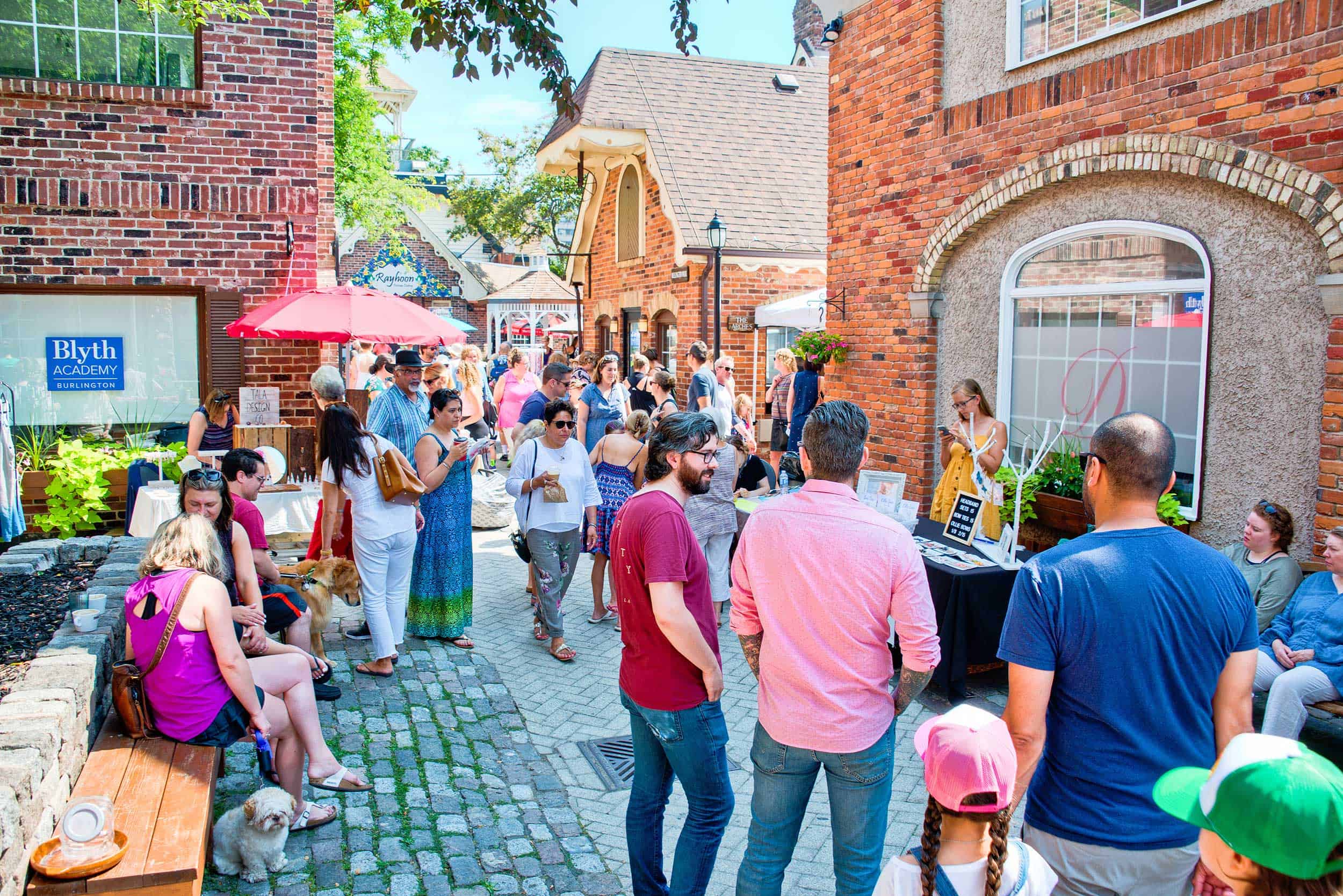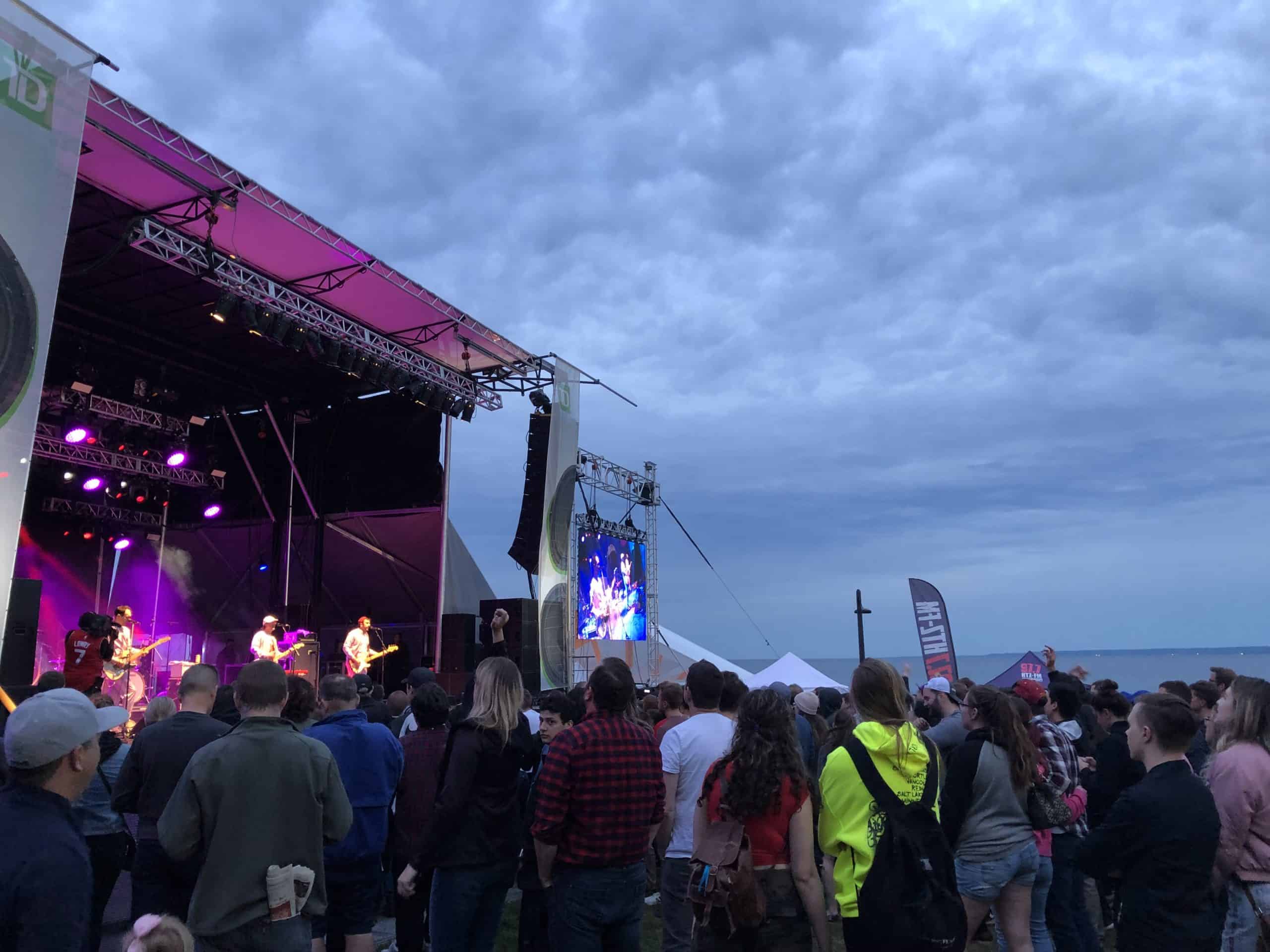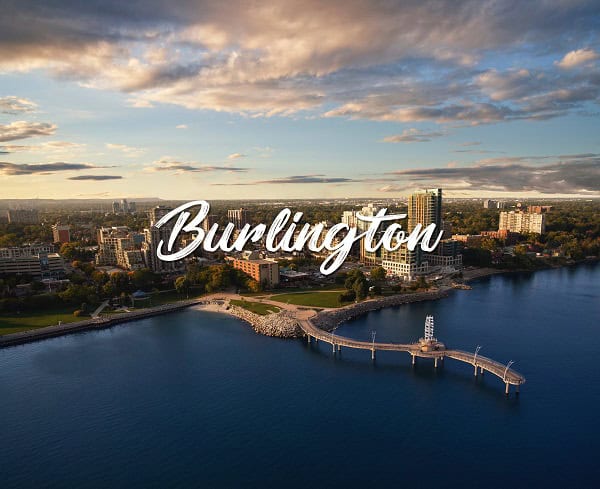Events

Burlington is known for its festivals and events! Join us for immersive events all year round.

Dry Thunder
January 11 @ 8:00 AM - April 27 @ 5:00 PM
The concrete rooftop of Misbah Ahmed’s childhood home in Islamabad revealed a lush horizon. At dusk, she could look down upon a wayward road and speculate on roaming dogs and the secret lives of stray cats. From above, she would notice the darting bats and flocks of crows, swinging through the twilit sky. She could even peek into the windows of neighbours nearby, and wonder about the aunties’ hushed conversations over chai, or watch an uncle kneeling on a prayer mat, making his final duas for the night. From a distance, past valleys and rivers, the great Margalla Hills loomed over the cityscape. During our first studio visit, Ahmed recalls the thunderstorms and lightning strikes that would hit the tops of the mountains, without a hint of rain. These rainless storms are known as dry thunderstorms—the phenomenon occurs when a storm’s precipitation evaporates before it ever touches the ground. In South Asia, dry thunder is a common occurrence and known to cause wildfires and dust storms— a symptom of ongoing climate catastrophe in the region.
Dry Thunder, Misbah Ahmed’s first institutional solo exhibition, brings together ceramic sculptures and paintings to explore and meditate on regional folklore, eco-poetics, and urban and wildlife transformation. Similar to the atmospheric and metaphoric contradictions of dry thunder, Ahmed molds traditional vessel shapes into anamorphic forms, inscribing them with local (Sindhi-Punjabi-Hunza) folktales and mythologies. For Ahmed, folklore is a mode of thinking that contains both ancestral and colonial history, and features both the mundane and the extraordinary. Pakistani-Canadian artist-researchers Manahil and Nimra Bandukwala consider Sindhi folktales and their interpretation as a method of bridging the knowledge gap between South Asian contemporary life and their ancestry: “We grew up in Karachi hearing about the jinn that roamed streets at dusk. These stories were why we came home at maghrib and never touched trees at night. Folklore influences human behaviour for generations, and are [sic] the reason why we do what we do.”
In Dry Thunder, Ahmed uses the medium of clay to morph vessels into distinct folktales and wildlife figures. Through this method, she shapes her own visual vernacular of the vessel form. In Pari Ka Dost (Friend of the Faeries), the tall vessel has two protruding markhors mirroring each other on either side of its form. The markhor is a type of goat, native to the Karakoram and Himalayan mountains, known for its spiral horns, which, in this artwork, sprawl along the sides of the vessel. The markhor is the national animal of Pakistan, and is considered to be a good omen and related to fairies that inhabit the Hunza mountains. Unfortunately, the markhor is critically endangered due to habitat loss, poaching and illegal hunting, and climate change.
In Tiger Amphora, Ahmed adorns the red, black, and white vessel with tigers instead of handles as a gesture to her South Indian heritage. Here, Ahmed upends historical representations of the tiger from Britain’s colonization of India—part of the British strategy to assert their dominance and reify racial and colonial power dynamics. Indian rulers traditionally used tigers as symbols of power, valour, and majesty; when the British colonized India, they appropriated and reframed these representations through a Eurocentric lens. For example, British military and police officers, and other colonial administrators would assert their dominance through tiger hunting, thereby transforming the killing of the tiger—a powerful symbol in Indian culture—into a performance of colonial authority, masculinity, and dominance. Visual representations from this colonial period often immortalized these hunts, showcasing British men as victorious and heroic figures. These depictions reinforced multiple forms of propaganda: the colonial narrative of masculine power and the perceived success of their empire-building efforts to Victorian audiences back in Britain. In contrast to this colonial strategy, Ahmed dedicates Tiger Amphora to the power and resilience of the tiger, in a way that centers the animal, rather than the animal as metaphor for colonization and subjugation. A frequent theme in Ahmed’s ceramic sculptures is her attention to the histories and stories of animals native to South Asia that are considered culturally significant and revered, but whose livelihoods and natural environments are constantly undergoing threat and endangerment.
Ahmed’s paintings, which are featured on her ceramic sculptures, as well as on mylar, reference real and mythical stories of various landscapes, both near and far from her childhood home in Islamabad. From her family’s rooftop, Ahmed observed the lively city and its inhabitants, as well as the never-ending rapid urbanization. In addition to her explorations of mountainous terrains, Ahmed also explores desert and river landscapes, which loop in and through the country’s topography. In Sassui Punnhun, Ahmed uses the spherical form of the vessel as canvas, employing vibrant glazes to map the tale of Sassui Punnhun, a tragic love story from an oral folklore retold by Sindhi Sufi poet Shah Abdul Latif Bhittai. Ahmed accents the vessel using colourful patterns inspired by neighbouring city Lahore’s historic street architecture. Ahmed’s sculptural and painterly interpretations explore the figurative and material meaning of atmospheric chaos, through personal nostalgia, folktales, and the ever-changing natural environment.
Related Events
Explore These Things To Do In Burlington
Submit an Event
Have an upcoming event in Burlington, Ontario that you would like to promote? Submit it for free and we will add your event to our calendar. Events include local concerts, festivals, theatre, live music, sporting events, outdoor attractions, tours, and culinary events.
Preference will be given to events that drive tourism, are hosted by a tourism partner, or provide experiences for residents and visitors. Community events must be within Burlington/Halton and are free to attend or hosted by a not-for-profit.
SUBMIT AN EVENT
